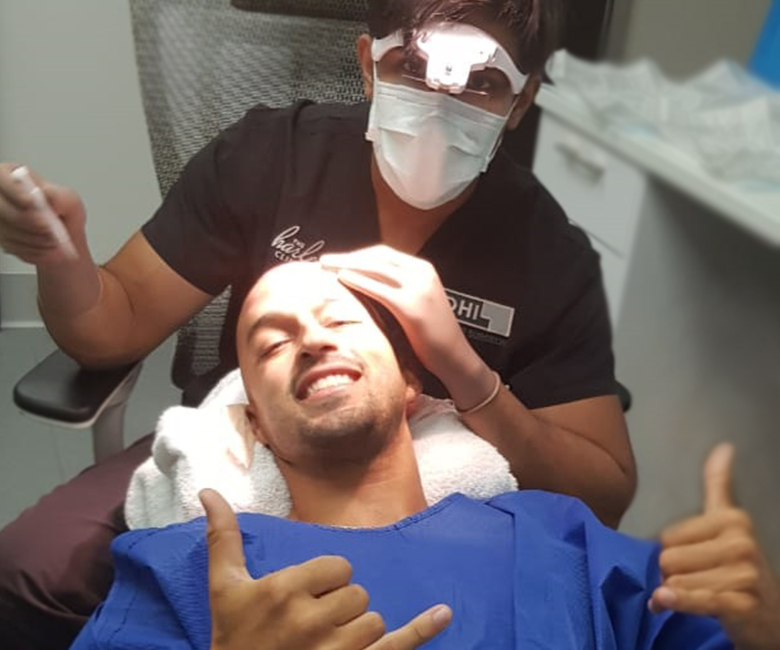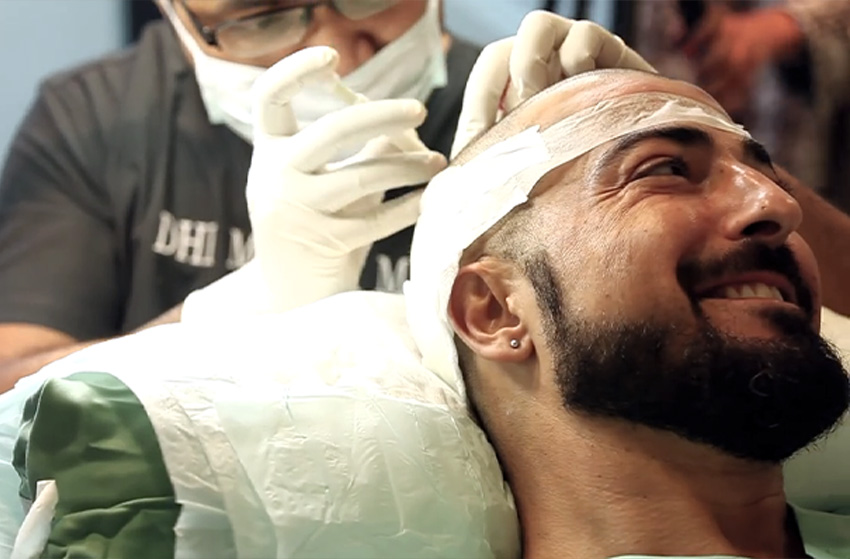What is DHI?
More than 85 percent of men have thinning hair by age 50. More than 50 percent of women will also experience a noticeable amount of hair loss in their lifetim
Several types of hair transplant surgeries have been developed to help regrow lost hair. Follicular unit transplantation (FUT) and follicular unit extraction (FUE) are the two most common techniques.
During FUT, a surgeon cuts a strip of hair from the back of your scalp and extracts individual hair follicles. During FUE, a surgeon removes follicles directly from your scalp. In both surgeries, the follicles are implanted into balding parts of your scalp.
-
Direct hair implantation (DHI) is a modification of the FUE technique created by the company DHI Global Medical Group.
-
In FUE, a surgeon manually cuts channels in your scalp before implanting hair follicles. During DHI, they use a specialized pen-shaped tool that can do both at the same time.
-
Let’s break down everything you need to know about DHI surgery. We’ll also compare it to FUT and FUE to help you decide which may be best for you.
- Your surgeon will shave your head and apply local anesthesia to numb it.
- The surgeon will extract hair follicles from the back of your head using a tool with a fine tip.
- The hair follicles will be loaded into a pen-shaped tool and implanted into the balding part of your scalp.
- The surgeon will apply an antibiotic cream and apply a bandage to all sites.
Who needs a DHI procedure?
Age. People who get hair implants should be over age 25. Hair loss before this age is more unpredictable.
Hair diameter. People with thicker hair usually achieve better results than people with thinner hair. Thicker hair gives each hair follicle more coverage.
Donor hair density. Patients with a hair density of fewer than 40 folliclesTrusted Source per square centimeter at their donor site are considered poor candidates for hair transplants.
Hair color. People with light hair or with a hair color close to their skin tone often achieve the best results.
Expectations. People with realistic expectations are most likely to be satisfied with their results.
DHI vs. FUE and FUT hair transplantWho needs a DHI procedure?
During FUT surgery, a surgeon cuts a long and narrow strip of skin from the back of your scalp. Individual hair follicles are removed and implanted along your hairline. This method is usually the quickest and cheapest, but it can leave a long scar. The scar may be noticeable if you wear your hair short, but longer hair usually hides it.
In DHI and FUE surgeries, individual hair follicles are removed directly from your scalp. During FUE, a surgeon manually cuts a series of canals in your scalp to insert the hair follicles. The DHI technique allows surgeons to make these incisions and implant hair at the same time.
DHI and FUE avoid the long scar caused by FUT, however, these surgeries generally take longer and are more expensive.
Companies that offer DHI claim that it’s the most advanced and effective hair treatment option. However, there haven’t been any studies comparing the results to other hair treatment techniques.
All types of FUE surgery can be successful in treating hair loss. However, there’s some debateTrusted Source about whether FUT or FUE is the more effective method.








